Discovering 6 amazing Art and Handicrafts of Gujarat 2025
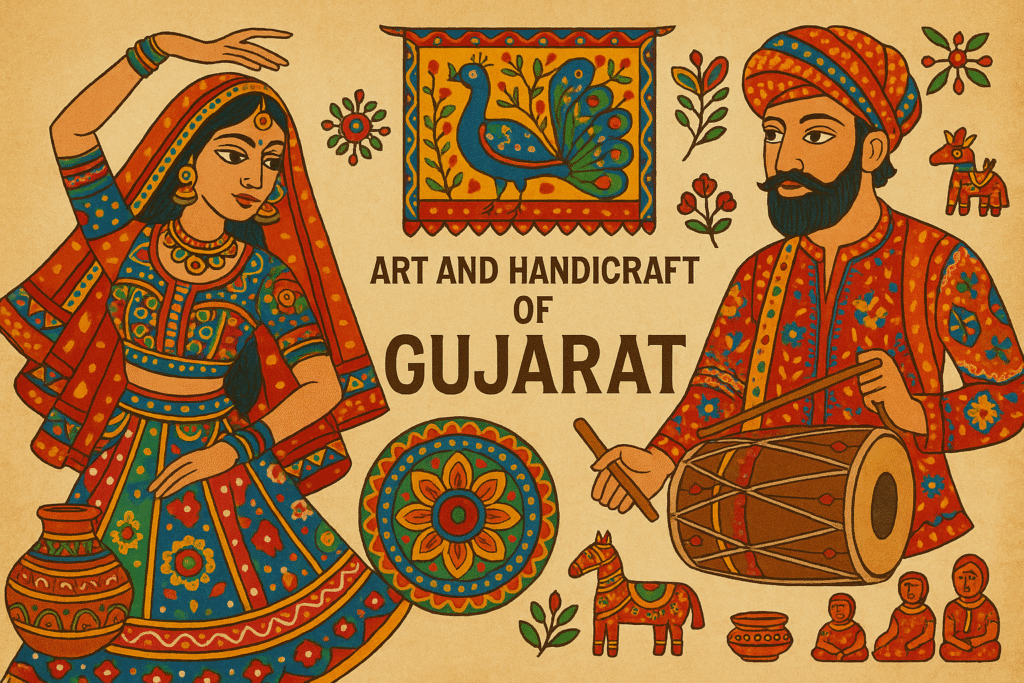
Gujarat is a cultural heritage haven and traditional art center,famous for its rainbow-hued festivities, grand architecture, and spicy cuisine. Gujarat is also a leading destination for various handicrafts. In this blog post, we’ll journey through some of the most celebrated Art and Handicrafts of Gujarat and will highlight their unique features, history, and continuing relevance in modern India. From the intricate weaves of Patola silk to the earthy beauty of terracotta and Rogan painting, these classic crafts show how alive Gujarat is and how its art has lived on for generations.
Bandhani: The Art of Tie and Dye
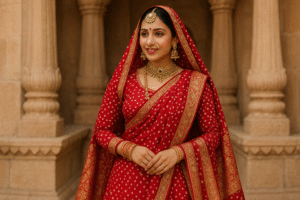
Bandhani is Gujarat’s finest textile art that represents the art and handicraft of Gujarat. This very old tie-and-dye technique consists of tightening the cloth into minute bindings and then dyeing it with brilliant colors. This made a tight weave of dotted designs, which are traditionally used in turbans, dupattas, sarees, and shawls This art form is common in Jamnagar and Bhuj and closely associated with the culture and customs of Gujarat. Every shade and pattern holds symbolic significance. Ex-red bandhani for brides as a sign of good luck.
Patola Weaving: A Royal Legacy
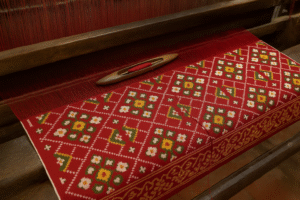
Another world-famous textile of Gujarat is the Patola saree, which is woven in Patan. These sarees are double ikat technique-made and time-consuming, being one of the most intricate textiles in the world. A Patola saree takes several months to make and is handwoven with pure silk and organic dyes. Once reserved for royalty and aristocrats, Patola sarees are still in great demand for weddings and ceremonial use. The patterns—like elephants, parrots, and dancing women—are symbols of fertility and prosperity.
Rogan Art: Precision Painting
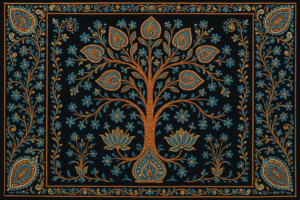
Rogan art is an uncommon type of painting which has been in existence for more than 300 years and is carried out by fewer than five families in the Kutch area today. It involves a paste prepared from castor oil and natural pigments, which is applied using a metal stylus to create intricate designs on cloth. This delicate, time-consuming method often uses symbols like trees of life, animals, and traditional patterns to show off the cultural heritage of the area.
Embroidery Styles: A Tapestry of Regional Flair
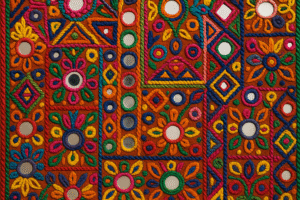
Gujarat has various embroidery forms, and each is associated with a specific region or community. Among the better-known ones are:
Rabari embroidery- It includes mirror work and bold motifs.
Ahir embroidery- It employs the application of geometric patterns and intricate designs.
Mutwa embroidery- It has fine work and intricate stitches.
These types of embroidery are applied to clothing, wall hangings, bags, and even shoes. They are both a work of art and income for thousands of rural women.
Terracotta and Pottery: Earthy Elegance
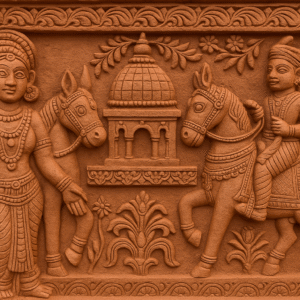
Terracotta work has remained a part of Gujarat’s craft tradition since the time of the Indus Valley Civilization. To this day, craftsmen still fashion clay into graceful figurines, water jugs, diyas (lamps), and sculptures that serve as both utility and decorative pieces. The town of Gundiyali, located close to Bhuj, is especially renowned for its Gundiyali pottery, characterized by red and black finishes achieved with natural clay and firing processes.
Woodwork and Lacquer: Carving Craftsmanship
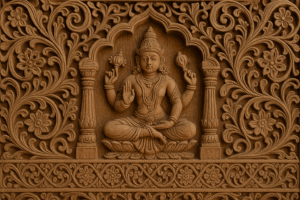
Woodcarvings are another ancient craft found in Gujarat, especially in states such as Sankheda and Bhavnagar. Furniture, doors, and temple decorations often have intricate carvings and colorful lacquer-painted designs. The mythological themes, flower patterns, and geometric shapes in these works of art show deeply rooted cultural meaning.
Conclusion: Living Traditions in Modern Times
Gujarati handicrafts and art are not mere history—they are alive and thriving traditions that continue to inspire and engage generations. Whether it’s a Bandhani dupatta that’s worn during Navratri, or a Patola saree that’s handed down through generations, these crafts are stitched into the fabric of Gujarati life on a daily basis. With mounting global interest in sustainably produced, handmade, and richly cultural products, Gujarat’s artisans are discovering new markets and fresh respect for their talent. From village bazaars to world exhibitions, their products are a shining tribute to India’s artistic heritage.

Pingback: Gujarat Culture: Exploring India's Rich Heritage & Traditions